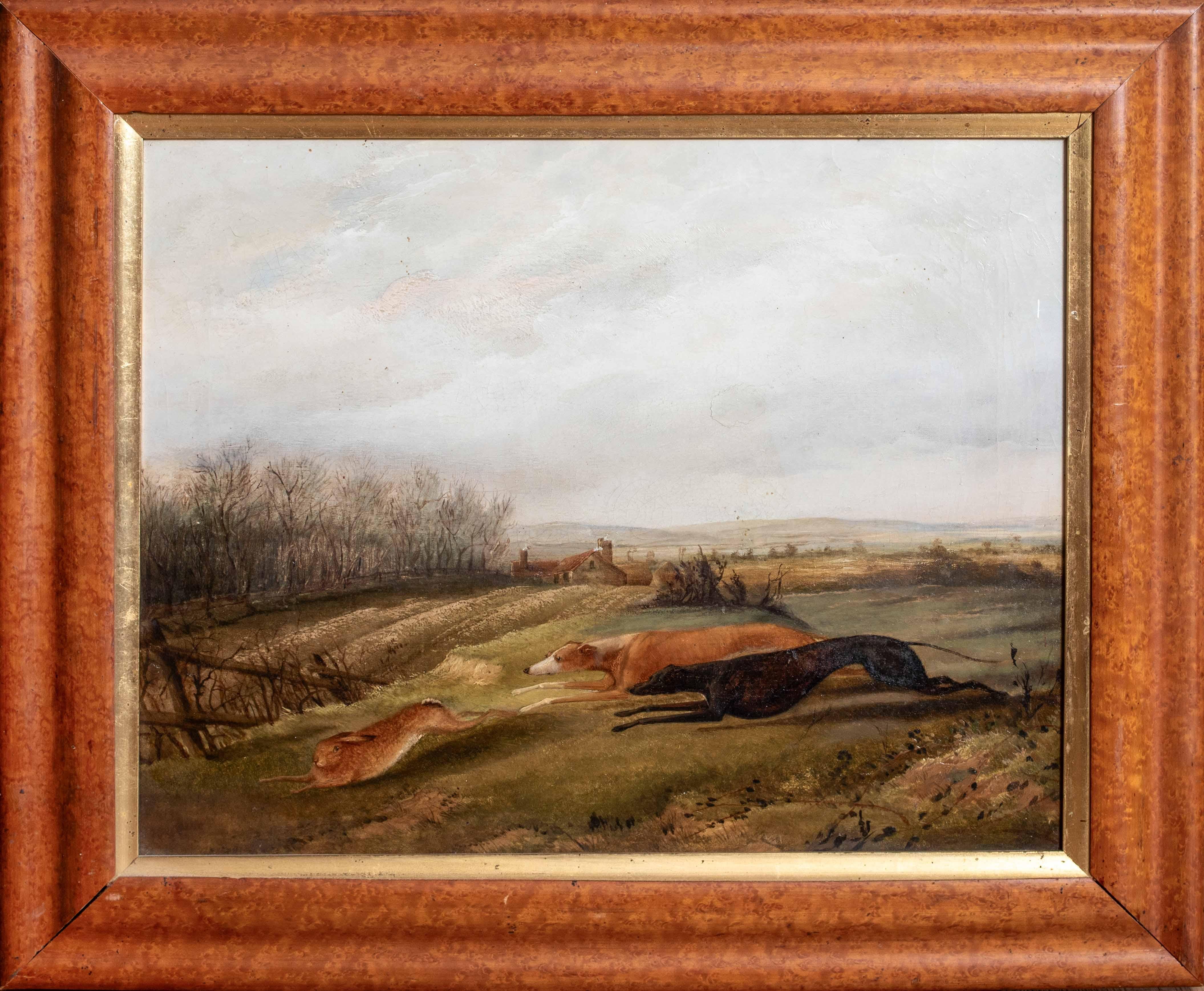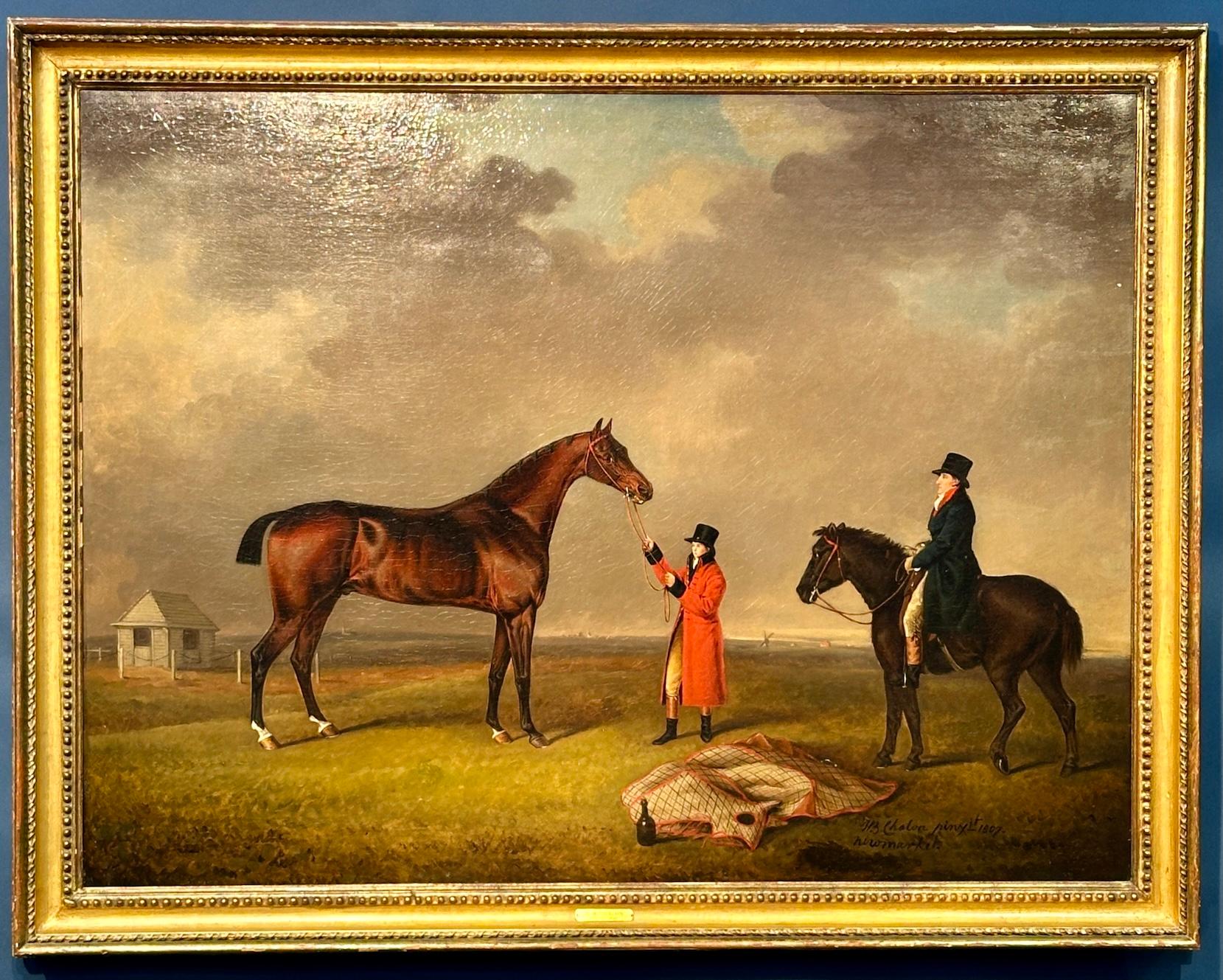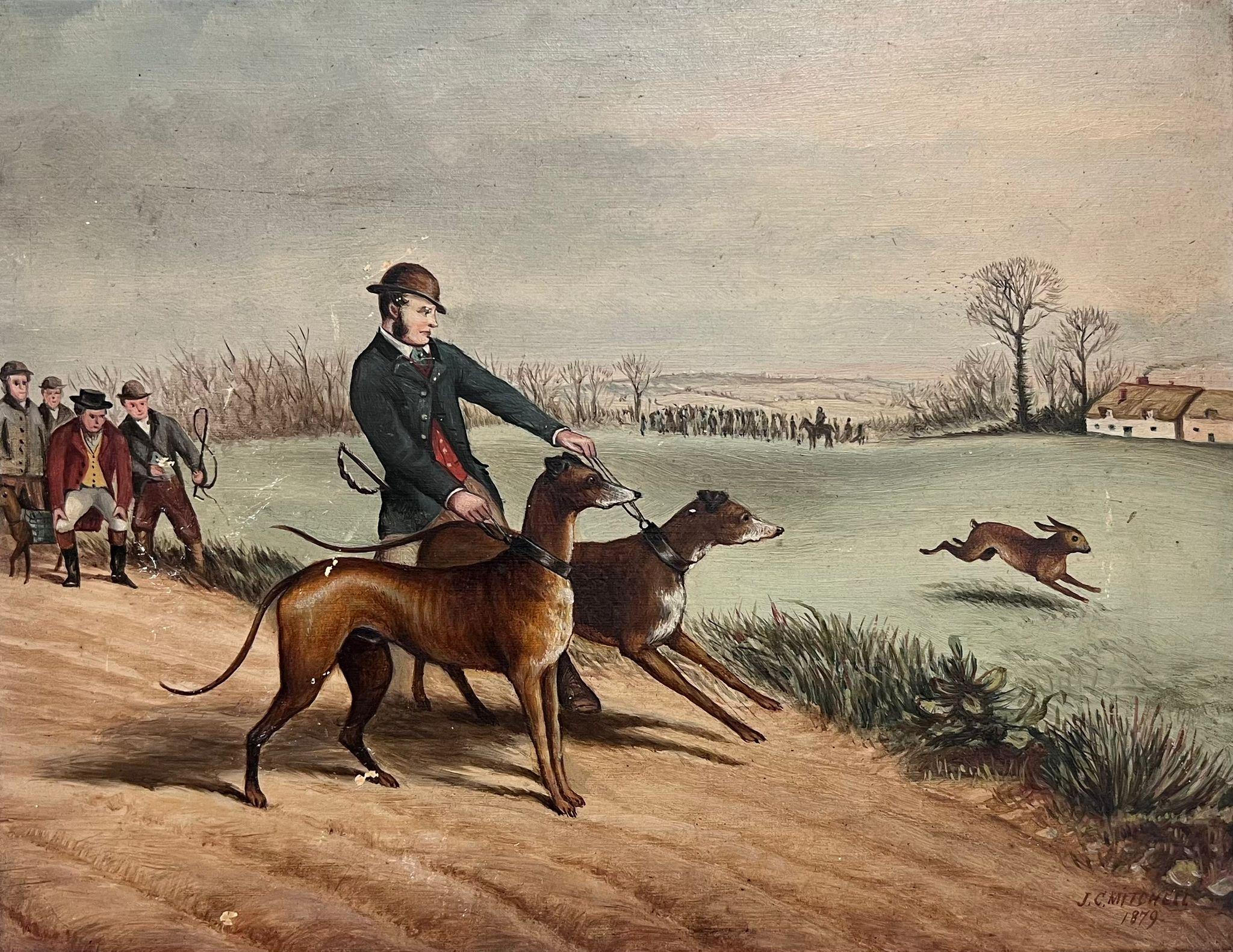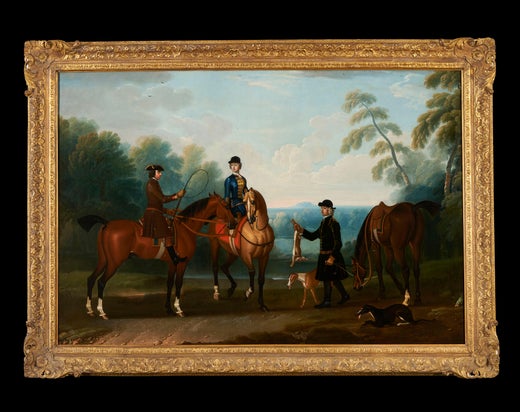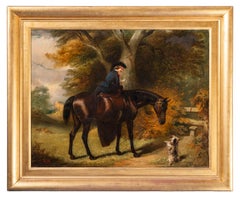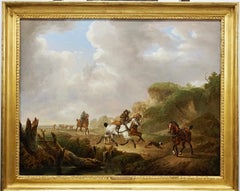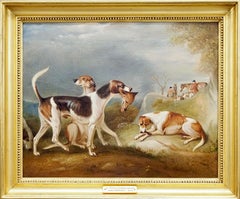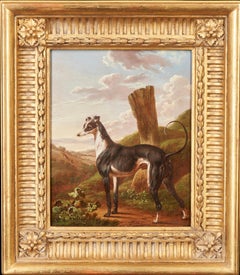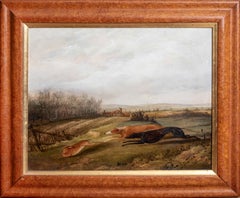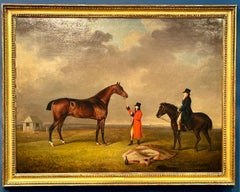James SeymourAn elegant lady and gentleman hare coursing in an extensive landscape
About the Item
- Creator:James Seymour (1702 - 1752, British)
- Dimensions:Height: 41 in (104.14 cm)Width: 57 in (144.78 cm)
- Medium:
- Movement & Style:
- Period:
- Condition:
- Gallery Location:Stoke, GB
- Reference Number:1stDibs: LU446315748692
James Seymour
James Seymour was an English painter, widely recognized for his equestrian art. He was born in London. His father was an amateur artist and art dealer, whose other business dealings as a banker, goldsmith, and diamond merchant afforded young Seymour the leisure time to study art on his own, either his father's or the art at the Virtuosi Club of St. Luke - a gentleman's club his father belonged to, specializing in art. In a short time, the boy was a self-taught artist, familiar with many of the prominent artists of the period. Seymour's love for art was matched only by his love for horses. He began spending time at racetracks early on, and before long found himself absorbed in the sport - drawing, painting, owning, breeding and racing horses. Seymour’s art proved popular among the prominent sporting families of the day, eventually garnering Seymour patrons in Sir William Jolliffe and Charles Seymour, 6th Duke of Somerset. Jolliffe's love for horses and art proved great, and his will would later establish an equestrian statue in Hampshire. In time, Seymour's work and fame had spread throughout Europe and America. Though ultimately his love for horseracing led to his financial ruin, Seymour still ranks among the most important early sporting artists, together with John Wootton and Peter Tillemans being considered one of the three founders of the sporting school.

- ShippingRetrieving quote...Shipping from: Andover, United Kingdom
- Return Policy
More From This Seller
View All19th Century Victorian Animal Paintings
Oil
Early 19th Century Victorian Landscape Paintings
Canvas, Oil
18th Century Old Masters Animal Paintings
Oil
19th Century Old Masters Animal Paintings
Oil
19th Century Victorian Animal Paintings
Oil
Early 19th Century Old Masters Animal Paintings
Oil
You May Also Like
18th Century English School Animal Paintings
Oil
19th Century Animal Paintings
Canvas, Oil
1810s Victorian Landscape Paintings
Canvas, Oil
Early 1800s Animal Paintings
Canvas, Oil
1810s Victorian Landscape Paintings
Canvas, Oil
1870s Victorian Figurative Paintings
Oil
